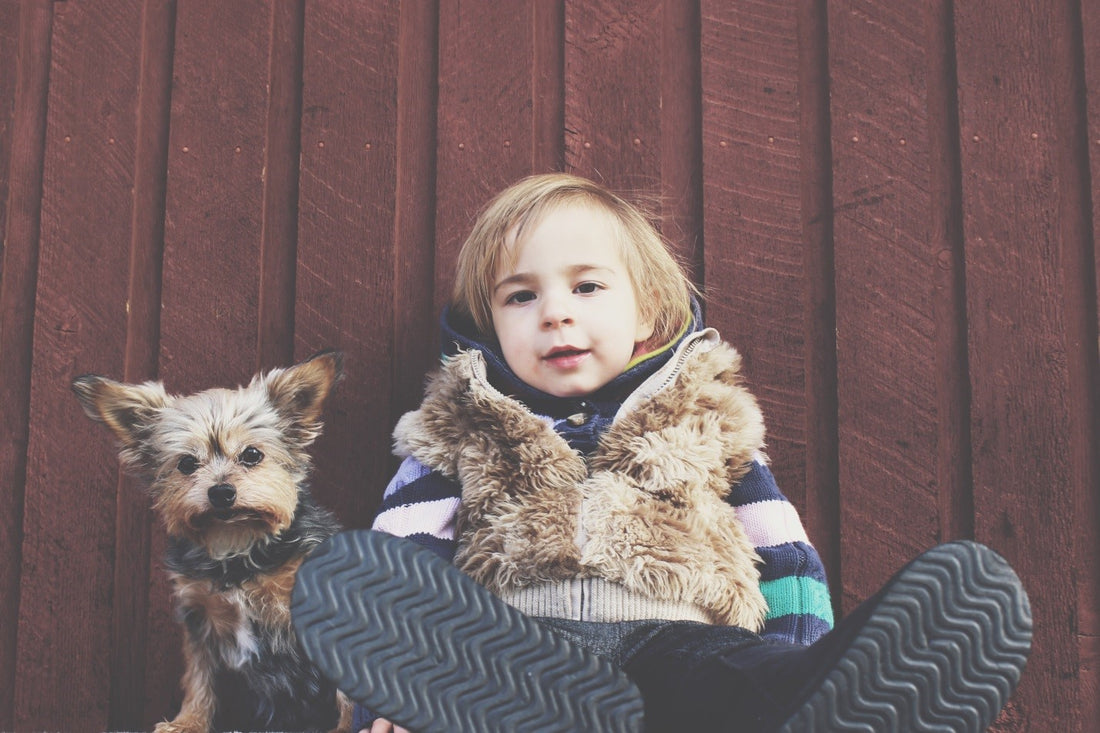
How A Family Dog Can Boost Your Children’s Health
Share
Photo by @levisaunders Licensed Under CC0
If you have kids, you might wonder whether having a dog is good for their health. After all, some dogs can’t stop themselves from licking food off of your children’s faces. Dogs roll around in the dirt and bring it inside. Even if you think your dog is dirty, having him around is good for your little ones’ well-being, according to Health. Here’s why.
Dogs Help Prevent Infection
Even if a dog’s mouth isn’t actually cleaner than a human’s, having a canine in the house can help protect against infection. SlimDoggy says that the dust in households with dogs contains beneficial microbes. These agents might get into children’s gastrointestinal tracts and improve immunity. The microorganisms might also protect against a respiratory virus that has been linked with asthma.
Children with dogs get fewer colds than kids without dogs. They also don’t take antibiotics as often.
Exposing children to all kinds of germs at an early age can improve their immune systems. Researchers are learning that young children who are exposed to dogs can ward off illness better than children in canine-free households. They’re not sure if this benefit extends into adulthood, though.
Dogs Help Kids With ADHD
According to Healthline, ADHD is on the rise in children. Playing with dogs can help children with the condition in a number of ways.
Dogs teach children responsibility. Kids with pets must learn to consider the well-being of another living creature. Psychology Today says that dogs can teach kids with ADHD to plan ahead. If children are excited to help plan out a dog’s walks and feeding times, they might be able to handle other routines, like homework and getting ready for school, better.
Children can also develop their gross and fine motor skills when they play with dogs. A systematic review in the journal Research and Development Disabilities explains that the majority of children with ADHD also have impaired gross and fine motor skills. This can come across as erratic movements and sloppy handwriting.
Kids with ADHD may experience criticism from their peers, parents and teachers. A dog provides unconditional love and can improve a child’s self-esteem.
Dogs Boost Your Kids’ Activity Levels
The CDC says that about 20 percent of children between the ages of 6 and 19 are obese. Although genetics and metabolism can contribute to having excess body fat, physical activity is incredibly important. Plus, exercise helps with heart and respiratory health.
The Mayo Clinic explains that kids ages 6 and older should be moderately or vigorously active for at least an hour a day. However, 75 percent of children ages 6 to 10 get less than that, according to WebMD. Also, most parents don’t make overall physical health a priority for their kids.
A dog can help your child become more active without really trying. LiveScience says that London researchers monitored movement levels of 9 and 10-year-olds for a week.
Dog owners spent 11 more minutes a day moving around than people who didn’t have dogs. That means they got at least an additional hour of exercise per week. That doesn’t sound like much, but it could equate to one pound of bodyweight a month.
Dogs Are Good For Mental Health

Photo by llipkind Licensed Under CC0
Caring for a dog can help children experience less stress, anxiety and depression. According to HelpGuide.org, researchers have found several ways in which dogs are good for mental health:
- Pet owners are less likely to be depressed than people with no pets.
- Dog owners manage their blood pressure better in stressful situations.
- Having a pet dog can lower your blood pressure.
- Playing with a pet can increase levels of mood-boosting neurotransmitters.
- Pet owners go to the doctor less frequently than those without pets.
- Having a dog can lower your cholesterol.
Touch is a basic human need that children and adults require. Petting Fido releases chemicals in the brain that soothe anxiety and relieve stress.
You don’t even have to touch your dog to be happier. Research shows that just looking at your dog can make you smile.
The reduced stress levels that accompany owning a dog have lots of health benefits. Increased levels of cortisol have been linked with a number of medical conditions in adults, including inflammation, cardiovascular disease, obesity and high blood pressure. Having a dog might set your child up for a healthier future.
Early Exposure To Dogs Might Prevent Allergies
Many people are hesitant to bring a pet into the house because they’re afraid that their children may be allergic to it. However, WebMD says that owning pets might actually reduce the risk of allergies.
Children who are exposed to dogs before their second year of life may be less likely to develop allergies to pets as adults. The longer they’re around the dogs, the better. The dog’s ability to protect against allergies may even be greater in kids whose parents are allergic to pet dander.
In one study, infants who were raised in a household with at least two dogs or cats were up to 77 percent less likely than kids in pet-free families to get other types of allergies. This included sensitivities to dust, grass and ragweed.
To thwart allergies, you should expose newborns to dogs as early in life as possible, according to the University of Wisconsin Department of Pediatrics. In one study, researchers investigated how infants whose parents were allergic to pets responded to living with an animal.
Babies who lived in a house with dogs were less likely to develop atopic dermatitis, a type of eczema, than those who grew up with no pets. They also were less likely to develop wheezing by the time they were three. Children who got a dog after the newborn stage didn’t experience the same results.
Dogs can improve children’s health on many levels. If you’re worried about bringing a dog into your household, the canine is likely to do more good than harm. Many of the benefits stay with your child as he or she grows into adulthood.

